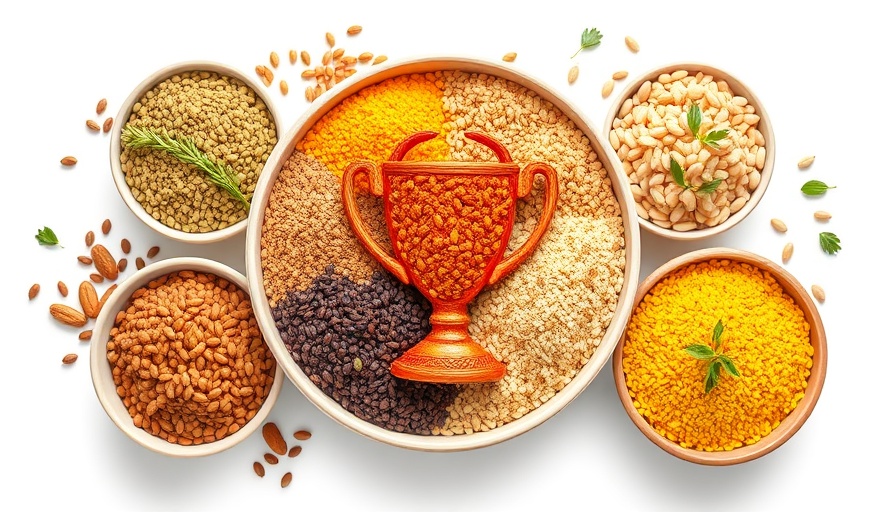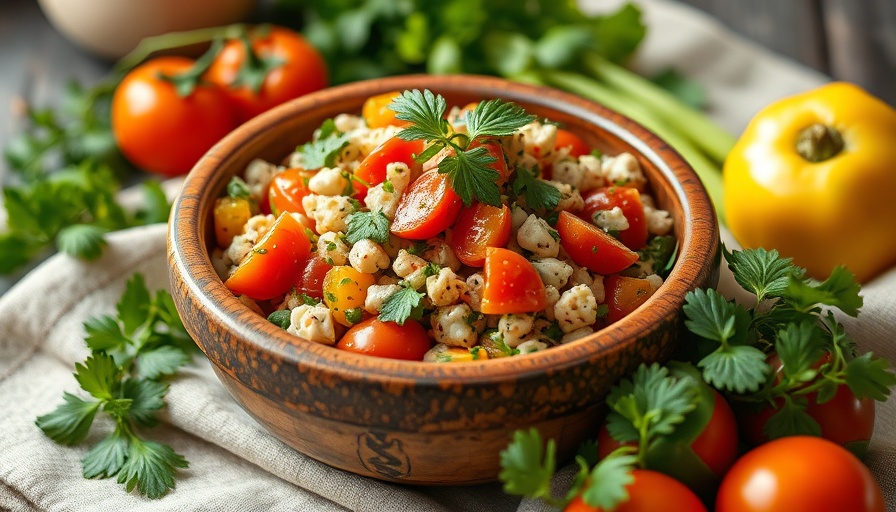
Discover the Magic of Miso: Your Secret Ingredient
Miso dressing is not just any condiment; it's a flavor powerhouse that can elevate your meals in just minutes. This popular Japanese staple, made from fermented soybeans, brings a savory umami taste that transforms bland dishes into culinary delights. The beauty of miso lies not only in its taste but also in its incredible versatility – from salads to poke bowls, miso dressing can do it all!
A New Approach: Your Go-To Miso Dressing Recipe
Easy to prepare and packed with nutrition, this miso dressing stands out for its unique ingredient: aquafaba, the liquid from canned chickpeas. It acts as a natural emulsifier, creating a rich, creamy texture without any added oils or dairy. Imagine drenching fresh greens or roasted veggies in this dressing, or even using it as a delightful dip for your appetizers.
The quick recipe combines white miso paste, maple syrup for sweetness, and a splash of apple cider vinegar to create a tangy kick. You’ll appreciate the balance of flavors that come together so harmoniously. Essential ingredients like garlic and low-sodium soy sauce enhance the depth further, making it a dressing that can stand alone or complement a variety of dishes.
Health Benefits of Miso: Goodness in Every Drop
Miso isn't just delicious; it's also incredibly nutritious. Known for its probiotic properties, it's beneficial for gut health and digestion. The fermentation process used to create miso enriches it with beneficial bacteria, helping to maintain a healthy microbiome. The essential vitamins and minerals found in this umami-rich paste provide nutritional value that enhances your overall well-being.
As a zero-fat alternative, this miso dressing can be a guilt-free addition to your meals. Swapping traditional dressings for miso dressing can help you control your intake of unhealthy fats while still enjoying flavors that excite your palate.
Incorporating Miso Dressing into Your Diet: Endless Possibilities
This versatile dressing can do much more than top salads. Use it as a marinade for proteins like tofu, fish, or chicken. Drizzle it over roasted vegetables or toss it in a grain bowl for a nutritious boost. It complements various cuisines and is especially delightful with Asian-inspired dishes.
Don't hesitate to experiment! Whether you're making Buddha bowls or simply looking to bring life to your steamed veggies, the easy-to-make miso dressing should be a staple in your kitchen.
Storing Your Miso Dressing: Quick Tips
After whipping up a batch of this delicious dressing, store it in a sealed container in the refrigerator. It’s best enjoyed fresh, but can last up to a week. As flavors may intensify over time, just give it a good shake before using to redistribute the ingredients. If you prefer a thinner consistency after storage, add a bit of water or more aquafaba to achieve your desired texture.
Conclusion: Take the Plunge into Healthy Eating
Miso dressing is an easy way to enrich your diet with flavor and nutrients. With just a few minutes of preparation, you can create something that adds both depth and health benefits to your meals. Ready to dive into the world of miso dressing? Grab your ingredients and start experimenting today!
 Add Row
Add Row  Add
Add 




Write A Comment